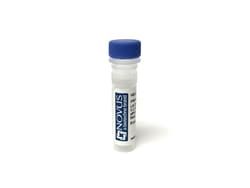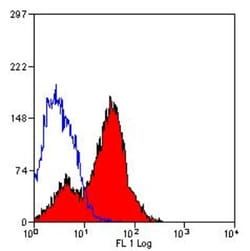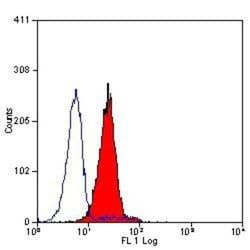HIV-1 Gag p24 Antibody - BSA Free, Novus Biologicals™
Manufacturer: Fischer Scientific
Select a Size
| Pack Size | SKU | Availability | Price |
|---|---|---|---|
| Each of 1 | NB017726-Each-of-1 | In Stock | ₹ 18,378.50 |
NB017726 - Each of 1
In Stock
Quantity
1
Base Price: ₹ 18,378.50
GST (18%): ₹ 3,308.13
Total Price: ₹ 21,686.63
Antigen
HIV-1 p24
Classification
Polyclonal
Conjugate
Unconjugated
Formulation
Phosphate buffered saline with 0.01% Sodium Azide
Host Species
Goat
Purification Method
IgG purified
Regulatory Status
RUO
Gene ID (Entrez)
155348
Target Species
Virus
Form
Purified
Applications
Immunocytochemistry, Western Blot, Immunofluorescence
Concentration
4.0 mg/mL
Dilution
Western Blot 1:100-1:2000, Immunocytochemistry/Immunofluorescence 1:10-1:2000
Gene Alias
Capsid protein p24, Human immunodeficiency virus 1, Human immunodeficiency virus type 1 p24
Immunogen
Purified native p24, from strain IIIB.
Quantity
0.1 mL
Primary or Secondary
Primary
Test Specificity
Recognizes the HIV1 viral capsid p24 protein encoded by the gag gene along with p6, p7 and p17 which provide structural elements of the virus.
Content And Storage
Store at 4C short term. Aliquot and store at -20C long term. Avoid freeze-thaw cycles.
Isotype
IgG
Related Products
Description
- HIV-1 p24 Polyclonal specifically detects HIV-1 p24 in Virus samples
- It is validated for Western Blot, Immunohistochemistry, Immunocytochemistry/Immunofluorescence, Immunohistochemistry-Frozen.


